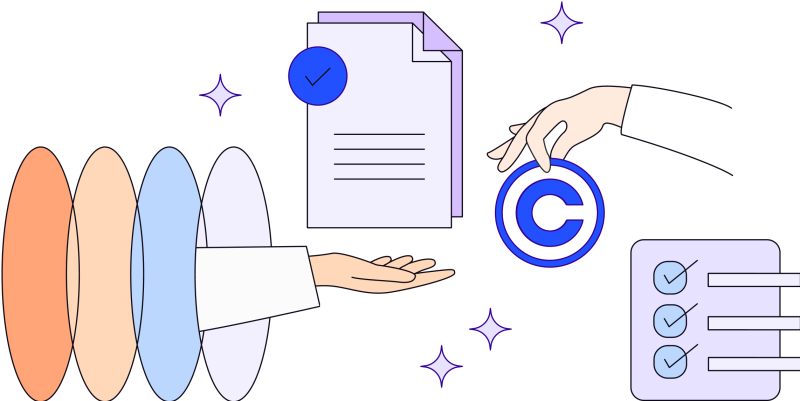It’s the morning of your pitch to a big investor. You wake up early to get in the right mindset, rehearse your elevator pitch in the shower, and dress for success. You arrive early, bumping elbows and preparing for the big ask. You nail your speech. Great job!
But wait, what about your investor slide deck? Was it just as impressive?
It’s not enough to rely on your good looks and elevator pitch. You need an investor deck that emulates the passion behind your product, too. And guess what? Punching up your design and overhauling your visuals can do just that.
Spending some concentrated time in Canva, Prezi, or Pitch.com can pay off. When you incorporate visuals, organize your content, and include all the key information your investors are looking for, you put yourself in that much better of a position to impress.
That’s right. You only have one chance to make an impression and hit a grand slam for your B2B SaaS startup. Make the most of it by putting your presentation skills to the test — and swing for the fences.
Kevin O’Leary, Lori Greiner, and Robert Herjavec of ‘Shark Tank’ © Eric McCandless/Walt Disney Television via Getty Images
Why Visuals Matter in an Investor Deck
A blank and boring presentation deck will garner blank stares from bored investors, no matter what you sell in your speech. You need to be able to show passion for your idea, evoking emotion from investors so they care about your product — and a lackluster PowerPoint just won’t cut it.
Visuals in your investor deck can add an extra layer of professionalism to your presentation, proving that you’re business savvy and creative. That's something all investors pay attention to — and value. Trust us, your investors will be able to tell how much (or how little) care you put into your presentation. They’ve seen a lot!
Another quality investors value? Organization. A cohesive, methodical slide deck goes a long way in proving you take after Marie Kondo. And, think about it: they’re not going to invest with anyone who isn’t organized. The better you can organize and streamline your deck, the more seamless your presentation will be and the more trustworthy you’ll be.
Don’t take our advice too literally, however. It’s one thing to use visuals artfully and another to throw too many fonts and graphics for the sake of an anti-blank slide. A professional, convincing deck keeps investors engaged and focused, while a bad deck overwhelms and loses investors with too many colors, fonts, and graphics.
Simply put, simplicity is key.
Lastly, visuals are important if you want to stand out from the next guy. Investors are constantly being pitched incredible ideas. (Have you seen Shark Tank!?) Truth is, if your presentation doesn't stand up to the next products in both content and a beautiful demonstration, you may be in trouble.
5 Tips to Make Your Product’s Presentation Memorably Awesome
If it’s been a while since you’ve touched your investor deck, no worries. Think of today as the first day of spring training. It’s time to get into fighting shape.
To do it right, don’t miss out on incorporating these tips.

Use consistent branding Put your brand’s fingerprints all over your presentation — colors, typography, imagery — any unified element from your design system. Don’t have a solid brand image yet? That’s ok! Stick to using the same two or three colors, no more than two fonts, and use consistent styling for your headers. Each element needs to serve a purpose, otherwise, it gums up your aim for simplicity.

Tell a story and keep it simple Incite FOMO by telling a story in an enthusiastic and visually appealing way. You want to show the investors that your idea is so good that they need to invest before someone else does. That said, keep it organized and down to between 15 and 20 slides. Investors are busy people! Editing your pitch down to the bare necessities is your best bet. And hey, stay out the weeds, ok? You don't need to talk about the how or the difficulties you foresee yourself coming across. Investors know to expect the unexpected. The more technically savvy investors will ask those questions when the time comes. Keep your idea and story high-level so the investors focus on what matters during the pitch.

Invest in impactful, compelling images You know those cheesy pictures of businesspeople huddled in a conference room, laughing around a spreadsheet? Yeah, investors get annoyed by those, too. Don’t use stock imagery! Use images that are impactful and add to your story. If it’s in your budget, hire a photographer to stage some scenarios specific to your company. And, mix it up! If you feel like you’re using too many images, use icons to help increase understanding. If illustration is more indicative of your brand than photography, spend time communicating pieces of your story through illustrative elements.

Add visually compelling graphics There is a reason everyone’s jumped into data visualization — it’s interesting and helps contextualize bigger concepts. Charts, graphs, and product mockups bring your story to life. If your product has seen some major milestones, use a timeline to illustrate them. Show market trends with "word clouds" or "tag clouds". Be creative in how you present your key metrics!

Don’t forget important details After all your creativity, don’t let the small — but mighty — details unravel all your hard work. Add your copyright to the bottom of each page, along with page numbers (so investors can easily follow along). And finally, for the love of Figma, please send your presentation in PDF format. That way your investors can open your deck without hassle, and your styles stay intact. DocSend is a great way to send PDF decks, allowing you to retain quality while collecting valuable stats like knowing which investors viewed which slides, how long they spent on each slide, and more.
The Key Slides to Include in Your Investor Deck
To woo investors, you only have a short amount of time. To strike any luck at getting backed, you need to make every second of your presentation count. This means that every page in your slide deck should serve a purpose to tell your story, state your case, and win them over. Here’s what you need to produce.
Title Slide
First impressions are everything, right? Well, this is your ultimate first impression. No pressure! Make sure your title slide is artfully designed with your brand’s elements. Use this one chance to immediately capture your audience with a compelling title slide.
The Problem
Your product exists to solve a problem or a need. In this slide, address the problem and the audience it affects.
The Solution (Hint: It’s Your Product)
It’s your product’s time to shine. Show how your product solves the aforementioned problem for your target customers. You can get creative, showing product mockups or early prototypes. Involve the investors by letting them get in the driver's seat with an interactive demo. Anything to show off your passion for the product.
The Mission or Vision of Your Company
A good way to wrap up your previous slide is to summarize your company’s mission or vision with your product. Why does your company exist? Your investors will want to know the big picture. This slide could include related images (but not stock photos, right?).
Ideal Customers & Traction
You’ve already hinted at them, but now’s the time to go a little deeper into your target audience. If you already have data on your customers, talk about it here — what they enjoy, what they hope to see, suggestions for improvement. Show types of companies who perhaps might be interested in using your product.
The Market Opportunity
Big picture: where do you fit in the market? Visual perceptual maps can help here to portray exactly what’s missing in the market that your product exists to fill.
The Competition
They’re out there, and you have to acknowledge them: your competition. Be respectful and give them credit where it’s due, listing ways in which they’re excelling. It’s important for investors to understand how you would differentiate yourself, so you can respectfully point out areas in which your competitors need improvement — and how you plan to fill the gaps.
The Team
This is your opportunity to get personal! Let your investors get to know the main stakeholders of your company who have the biggest impact on the product at hand. Be sure to use professional photography to match with your theme of being, well, professional.
Business Model
Getting into the nitty-gritty, it’s time to give your investors the lowdown on how you make your money, what your pricing model looks like, and your metrics. Cue the charts, graphs, and other data visualizations.
Financials
Money talks. Be transparent, but no need to go into too much detail. Provide your three to five-year projections, unit economics, burn rate, and other key metrics that would fill out the financial picture. Again, charts and graphs are your friends!
Marketing
Now’s the time to show off about any early success you’ve had or any press you’ve earned. Talk about current investors who have already signed on with you, if any. Humblebragging is totally cool here.
The Ask
The moment everyone’s been waiting for: what are you asking for? One super clear slide will do here. Just put it out there.
A Roadmap of What’s Ahead
Now’s the time to spell out your plans for any finances you may get. What will you do with the financing? How long will it last, and where will you invest your proceeds?
Thank You
If you don’t thank your investors, they’ll remember you — for the wrong reasons. Make sure to thank your investors for their time, and be sure to leave enough time for questions.
Pitching your passion project to a group of powerful people with money to change your business is...a lot. But build a cohesive, creative, detailed (but not too much!) investor pitch deck and you’ll be in the All-Star game before you know it. Batter up!



